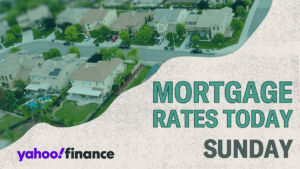Current Mortgage Rates: What You Need to Know
Mortgage rates have surged recently, with the average 30-year fixed interest rate climbing to 6.85%, up 12 basis points from previous reports. Meanwhile, the 15-year fixed rate has jumped even higher, reaching 6.16%, a significant increase of 21 basis points.
Future Projections
The Mortgage Bankers Association anticipates these 30-year rates will stabilize around 6.7% through September, with a potential year-end figure close to 6.6%. However, any unexpected economic jolts could alter this forecast significantly. If you plan on purchasing a home in 2025, now is the time to strategize for the best mortgage rate possible.
Current Mortgage Rate Snapshot
Here’s a breakdown of the latest mortgage rates based on data from Zillow:
- 30-year fixed: 6.85%
- 20-year fixed: 6.58%
- 15-year fixed: 6.16%
- 5/1 ARM: 7.16%
- 7/1 ARM: 7.23%
- 30-year VA: 6.42%
- 15-year VA: 5.86%
- 5/1 VA: 6.44%
Note: These rates are national averages, rounded to the nearest hundredth.
Refinance Rates Highlight
If you’re considering refinancing, here are the latest rates:
- 30-year fixed: 6.89%
- 20-year fixed: 6.78%
- 15-year fixed: 6.23%
- 5/1 ARM: 7.57%
- 7/1 ARM: 7.68%
- 30-year VA: 6.51%
- 15-year VA: 6.28%
- 5/1 VA: 6.30%
Again, these are national averages, and refinance rates can often be higher than rates for purchasing a home.
Choosing the Right Mortgage
When deciding between a 30-year and 15-year mortgage, your choice should align with your financial goals:
-
30-year mortgage: While the rate is currently 6.85%, it allows for lower monthly payments over a longer term. For example, on a $300,000 loan, your estimated monthly payment would be approximately $1,966, resulting in $407,680 paid in interest over the life of the loan.
- 15-year mortgage: With the average rate at 6.16%, this option comes with higher monthly payments—about $2,558 for the same $300,000 loan—but significantly less interest, totaling $160,364 over 15 years.
Fixed-Rate vs. Adjustable-Rate Mortgages
A fixed-rate mortgage locks in your interest for the entire term, providing stability in your monthly payments. Conversely, an adjustable-rate mortgage (ARM) offers a lower initial rate that can change after a set period, such as the 7/1 ARM, which remains fixed for seven years before adjusting annually. While ARMs can offer initial savings, they carry the risk of increasing rates that could outpace fixed-rate options.
Maximizing Your Mortgage Rate
Striving for the lowest mortgage rate? Here are some tips:
- Improve your credit score: Higher scores typically result in lower rates.
- Increase your down payment: Aim for at least 20% to avoid private mortgage insurance (PMI) and secure better rates.
- Reduce your debt-to-income ratio (DTI): Lenders prefer borrowers with lower DTI.
Don’t wait for rates to drop; focusing on your financial health now can lead to better mortgage options down the line.
Comparing Lenders Effectively
When seeking the best lender, apply for preapproval with multiple companies within a short timeframe—this minimizes the impact on your credit score while allowing for accurate comparisons. Pay close attention not just to interest rates, but to the annual percentage rate (APR), which includes all costs associated with borrowing and provides a clearer picture of your loan’s true cost.
For detailed guidance on obtaining the best mortgage for your situation, consider utilizing our free mortgage calculator. It not only factors in interest but also includes property taxes and homeowners insurance, giving you a more comprehensive view of your monthly payment obligations.
Staying informed about borrowing options and rates can empower you as you navigate the mortgage landscape. Let Extreme Investor Network be your go-to resource for reliable financial insights.

